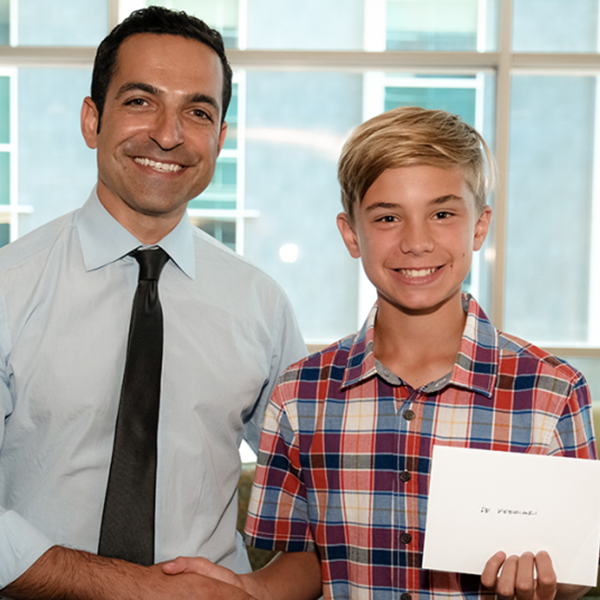Health Professional News, Mighty Blog
Courtney Cahow is an occupational therapist at Children’s Minnesota Maple Grove rehab clinic. Her work focuses on helping kids do the things they need to do every day—playing, engaging with their environment and self-care. As a creative problem-solver, she helps kids achieve the highest level of independence by developing strategies and mechanisms to strengthen the child’s ability to be independent, all in partnership with each child’s family.
Unexpected circumstances
Before COVID-19, Courtney didn’t think she would use virtual care. Her profession is hands-on and interactive with kids and their parents—a part of the job she really enjoys and relies on.
As Minnesota governor Tim Walz and the Minnesota Department of Health decided to pause many in-person medical services in March 2020, the physical medicine and rehabilitation team at Children’s Minnesota made the decision to quickly move to virtual care. Over the next several weeks, a team of 15 speech, occupational and physical therapists and leaders met daily. They referenced literature from pediatric hospitals around the country and worked as a cross-functional team to develop standards of care for seeing patients virtually.

“When I think back to how fast we worked, how we came together, it really shows Children’s Minnesota’s value of coming together by delivering active change that supports our mission,” Courtney said. “What we created is not just good therapy. Virtual care delivers great results, often as much as in-person sessions. In some cases, better.”
Empowering parents and families for the long-term
For both virtual and in-person sessions, Courtney works closely with parents to develop a personalized treatment plan for their child’s unique needs. What’s different about virtual sessions is that she relies on the parents’ ability to assist with setting up the appointment. Courtney guides the parent to identify the three to four things they are going to focus on in that session. Families follow Courtney’s instruction to bring specific toys that will help them practice specific skills at home. Since she only has one hour a week with each kid, she works hard to ensure the learning carries over to the family, creating a ripple effect of positive, long-term change.
“Carry over in parent education is crucial,” Courtney explained. “Now I can see my patients’ home environments, which can increase the impact of our work. They’re comfortable in their environment and I can see what parents have to work with. Kids are succeeding in this model.”
First virtual care appointment
At first, Courtney was very nervous, wondering if she’d be able to communicate well through video due to the potential loss of nonverbal and contextual cues that are abundant during in-person visits.
Courtney found that it was initially intimidating to develop effective, medically necessary therapy services via virtual health. Her first virtual care appointment was with a family that she already had a great rapport with, which helped put her at ease. When she logged on for this first appointment, her patient was singing songs from “Frozen.”
“He was so excited to see me and show me all of his toys. This was truly amazing because in the clinic, this boy was anxious and wouldn’t touch the toys. I worked with his mom, made small tweaks to their routine.” Now, she receives weekly progress videos showing him trying new foods and working on puzzles. His mom is so excited about how well he’s doing.
“Virtual care has been a great opportunity to offer a different level of support to families. We recognize that all families are different and respect that now more than ever. Some of our patients are higher risk and should not be coming into a clinic setting, others have had changes with routines and parents’ work schedules, which impacts a families’ ability to make it to in-person appointments,” Courtney said. “And for some, it’s an opportunity to empower families in their own environment.”
Looking ahead
Courtney’s virtual care appointments have gone well. While the virtual model of care may not work for every kid or every parent, Courtney connects with the rehab telehealth team to continually build on the strong foundation that the department has built. In-person visits are still an option if the virtual care visit wasn’t a good fit.
At first, when Courtney reached out to her patients, the parents had more apprehension than she did: “We’re learning every day together, and I’m grateful for my families to help me grow as a clinician—helping me to meet the needs of my patients. Through all of this, my love for my job has increased. The team has supported me, with cheers and positive comments. We share enthusiasm and tools. We’re growing our practice in ways we haven’t seen before.”
After her experience with seeing patients through virtual care, Courtney’s opinion has changed dramatically. Before she moved to seeing patients virtually, Courtney would have assumed in-person visits were better. Now, she thinks about how virtual care fits within her tool kit and how it can further enhance her practice.